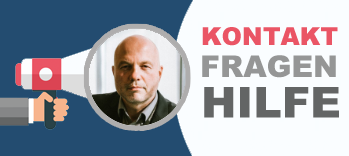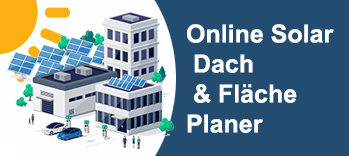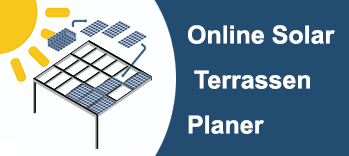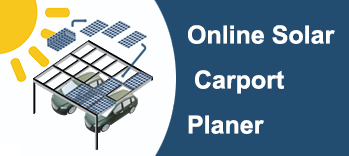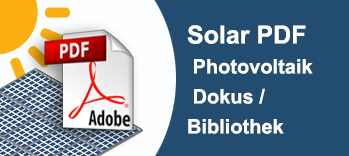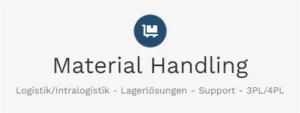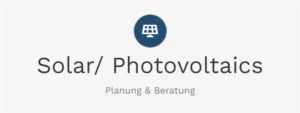PV/Solar | Wholesale photovoltaic-EU solar industry before the comeback? So Europe can break China's dominance in PV components
Xpert pre-release
Language selection 📢
Published on: May 22, 2025 / update from: May 22, 2025 - Author: Konrad Wolfenstein

PV/Solar | Wholesale photovoltaic-EU solar industry before the comeback? So Europe can break China's dominance for PV components-picture: Xpert.digital
Photovoltaic growth and falling PV component prices in Europe: opportunities and risks for wholesale
From China to Germany: The new drivers in the European photovoltaic market
The European large-scale photovoltaic market is located in a phase of dynamic transformation, characterized by robust growth in the years 2023-2024, but also of new challenges and changing market drivers. The installed PV performance in the EU grew by 66 GW in 2024, which corresponds to an annual increase of 4 % and increased the total capacity to 338 GW. This growth, although absolutely significant, represents a significant slowdown compared to the growth rates of over 40 % in previous years and signals market ripening. The European Solar PV market was estimated at $ 57.3 billion in 2023 and $ 63.1 billion in 2024. A remarkable aspect is the decline in investments in EU solar systems by 13 % in 2024 to EUR 55 billion, which is primarily due to falling component prices.
The primary growth drivers remain ambitious political goals at the EU and national level, technological progress with more efficient and cheaper modules as well as the increasing demand for energy independence and decarbonization. At the same time, network passes, complex approval processes, political uncertainties and the high import dependence, in particular from China, represent considerable obstacles. The volatility of component prices and the need for sophisticated inventory management are central operational challenges for wholesalers.
Forecasts for 2025-2029 indicate a continued solid, albeit more moderate growth. Solarpower Europe expects annual growth rates of 3-7 % for the EU, while EUPD Research predicts growth of around 10 % for 2025. The integration of energy storage, intelligent energy management systems and charging solutions for electric vehicles develops into a standard and expands the requirement profile for wholesale.
Germany claims its leading role in Europe with over 100 GW-installed overall output at the end of 2024 and an extension of around 16-17 GW in the same year. The German market shows a shift towards greater growth in the commercial and open space segment, while the boom in the private customer segment of 2023 normalizes. Other key markets such as Spain, Italy, the Netherlands, Poland and France have different dynamics, which are strongly shaped by national funding programs, regulations and specific challenges such as network stability (Spain, Poland) or the expiry of grants (superbonus in Italy, Net metering in the Netherlands).
The role of PV wholesalers develops from pure logistics function to a provider of integrated system solutions and technical expertise. In view of the market complexity and technological change, strategic partnerships, value-added services and high adaptability are crucial for success. The European PV industry also faces the challenge of strengthening its domestic production capacity to reduce import dependency, supported by initiatives such as the Net-Zero Industry Act. For wholesalers, this means navigating a market environment that carries both significant opportunities and significant risks and requires continuous strategic adaptation.
The European Photovoltaic Market: A MacRo-perspective
Current market status (2023-2024): installed capacity, growth rates, market value, investment climate
The European photovoltaic market continued to show a positive development in 2023 and 2024, albeit with changed growth dynamics compared to previous years. In 2024, the European Union (EU) installed 66 GW of new solar power, which corresponds to an annual increase of 4 % and raised the cumulative installed capacity to 338 GW. This growth rate represents a significant slowdown compared to the growth of over 40 % in previous years, which indicates an increasing maturity of the market after the direct reaction to the energy crisis has subsided. The phase of explosive growth, driven by short -term crisis reactions, seems to give way to more sustainable development, which is more shaped by long -term decarbonization goals and the economic attractiveness of solar energy.
In 2024, impressive 597 GW was installed in a global view of new solar power, an increase of 33 % compared to 2023. The “snapshot 2025” of the IEA PVPS confirms this development and speaks of over 600 GW systems in operation in 2024. The dominance of China with 329 GW reinstallations in 2024 relates European growth in relation and underlines China's massive influence on the global offer and price dynamics that directly affect European wholesale.
The market value of the European Solar PV sector rose from USD 57.3 billion to $ 63.1 billion in 2024 in 2023. This shows that despite a more moderate increase in installation figures, the financial scope continues to grow. Interestingly, annual investments in solar systems in the EU fell by 13 % to EUR 55 billion in 2024. This decline is primarily attributed to falling prices for PV components. This development illustrates an important market phenomenon: falling component prices can improve the affordability of solar systems and stimulate the demand, but at the same time lead to an increase in installed performance is not necessarily associated with a proportional increase in the investment value. For actors in wholesale, whose margins are closely linked to product costs and sales proceeds, this is a critical observation. EUPD Research reported a newly installed output of 64-65 GWDC for the EU in 2024, which corresponds to an increase of around 5 % compared to 2023 and supports the figures from Solarpower Europe.
The following table summarizes the most important key figures for the European PV market:
European PV market: important key figures (2023-2024)
Note: Depending on the source and methodology, the data can vary slightly.
The European photovoltaic market recorded in 2023 within the EU-27 installations from 61.9 to 63 GW, which rose to 62.6 to 66 GW in 2024, which corresponds to a cumulative capacity of 338 to 339.4 GW by the end of 2024. The annual growth rate for 2024 was around 4 to 5 %, with the market value being $ 63.1 billion and the annual investments reached EUR 55 billion.
In Germany, the annual installations rose from 14.1 to 15.4 GW in 2023 to around 16.2 to 17.5 GW in 2024, which led to a cumulative capacity of around 100 GW and an annual growth rate of around 10 to 14 %. The market value of the German PV sector exceeds $ 18.4 billion. Spain recorded a decline in the annual installations of 8.2 GW in 2023 to around 7.2 to 8.7 GW in 2024, but had a cumulative capacity of over 32 GW by the end of 2024.
Italy, on the other hand, was able to significantly increase its annual installations: from 4.8 to 5.23 GW in 2023 to 6.8 GW in 2024, which corresponds to a cumulative capacity of 37.08 GW and a growth rate of 30 % compared to 2023. France installed between 4.6 and 4.7 GW in 2024 and reached a cumulative capacity of 22.1 to 23 GW.
The Netherlands showed a decline in the annual installations of around 4.1 to 5 GW in 2023 to 3.1 to 3.4 GW in 2024, but still had a cumulative capacity of over 26.4 GW until February 2025. A decline in annual installations was also found in Poland compared to 2023. The cumulative capacity of the Polish PV market was 22.07 GW in April 2025.
These figures make it clear that the European PV market is still a central pillar of the energy transition, whose development is increasingly determined by complex interactions between global supply chains, national politics and the ability to absorb the infrastructure.
Important market drivers and challenges: political incentives, economic factors, technological progress, network integration problems, approval atmosphere
The European photovoltaic market is powered by a variety of factors, but also faces considerable challenges that influence its further growth.
Important market driver:
- Political support and EU goals: The EU Directive for Renewable Energies, which is aiming for 45 % of renewable energies in total consumption by 2030, as well as the repowering goals form a strong political framework. National funding programs and feed -in remuneration, such as the German EEG, continue to support the installations, even if their design varies and is subject to adjustments.
- Falling component prices: The costs for solar modules and other system components have dropped considerably in recent years, which has further improved the competitiveness of solar energy. This makes PV systems attractive for a wider spectrum of investors and end consumers.
- Technological progress: Innovations in modules (e.g. N-Type, TopCon, HJT, Bifacial modules), interverters and assembly systems lead to higher efficiency and extended applications. The development of perovskit solar cells and flexible solar panels promises further efficiency increases and new fields of application.
- Decarbonization and energy independence goals: The growing awareness of climate change and the pursuit of greater energy independence from fossil fuels and geopolitically unsafe suppliers are strong drive springs for the expansion of solar energy.
- Integration with memory and electromobility: The combination of PV systems with energy storage is increasingly becoming standard to maximize your own consumption and increase network stability. The coupling with charging stations for electric vehicles and heat pumps also drives the demand for integrated system solutions. Intelligent energy management systems (EMS) and IoT-capable devices optimize the efficiency of this sector coupling.
Essential challenges:
- Network integration and flexibility: The capacity and flexibility of the power grids are one of the greatest hurdles across Europe. Net water bottlenecks lead to delays in connections and to the delegation (curtailment) of solar power in times of high production and low demand. Without massive investments in network expansion, modernization and intelligent network technologies, including large -scale storage solutions, the recording capacity for new PV systems will remain limited.
- Approval procedure: Light and complex approval processes remain a significant bottle neck for project development in many European countries. This delays the expansion and increases project costs.
- Political uncertainty and changes in funding programs: abrupt changes or the expiry of funding programs, such as the reduction of feed -in tariffs in France or the end of the super bonus in Italy, can undermine investment security and lead to market fluctuations. These “political lashes” make long-term planning more difficult for all actors, including wholesalers who have to adapt their inventory and demand forecasts.
- Dependence on supply chains: A high dependence on imports, especially for solar modules and their pre -components from China, carries risks to security and price fluctuations. Efforts to strengthen European production, such as the Net-Zero Industry Act, aim to reduce this dependency.
- Economic framework conditions: High energy costs for production in Europe, inflation pressure and shortage of skilled workers can influence the competitiveness of European manufacturers and the costs for end customers.
The increasing technological complexity through integrated solutions (PV + memory + EV + heat pumps) and intelligent energy management systems places new demands on the technical expertise of installers and requires a broad, integrated product portfolio as well as increased technical support. The wholesale thus develops from a pure component supplier to the provider of complex system solutions.
Important drivers and challenges for the European PV market (2024-2025)
The most important drivers and challenges for the European photovoltaic market from 2024 to 2025 can be divided into four categories: politically and regulatory are ambitious EU and national goals such as EU Red and Repoweweu as well as support programs such as EEG central drivers. However, this contrasts with network bottlenecks, lack of flexibility, lengthy approval procedures, political instability and possible funding cuts as challenges. Economically promoting falling system costs and striving for energy independence, the development of the market, while the price volatility in components, the high energy costs for EU production and inflation pressure occur as hurdles. Technologically, increases in efficiency through new technologies such as N-Type and TopCon, the integration of storage and smart grids as well as innovations such as AGRI PV and Perowskite are driving the industry. At the same time, the need for fast network modernization and the complexity of integrated systems represents a challenge. In the area of supply chain and the market, there is a growing demand for green products as an essential driver, while the import dependence - especially from China - and the shortage of skilled workers slow down the development. These factors illustrate the complex environment in which the European PV market and especially wholesale are moving. A successful navigation requires a deep understanding of these dynamics and a high adaptability.
Market forecasts (2025-2029): Projections for capacity, value and influential trends
The forecasts for the European photovoltaic market from 2025 to 2029 indicate continued solid growth, albeit with regional differences and a certain uncertainty due to various influencing factors.
According to the “Global Market Outlook for Solar Energy 2025-2029” by Solarpower Europe, it is expected that the global PV installations will reach 655 GW in the middle scenario in 2025 and will increase annually by 2029. For Europe, it is predicted that in 2025 it will make up about 13 % of global new installations. The “EU market outlook 2024-2028” by Solarpower Europe is based on annual growth rates in the low single-digit range of 3-7 % between 2025 and 2028. By 2028, the EU could therefore install 82 GW annually and reach a total capacity of 816 GW by 2030 (medium scenario). However, the warning in the “low” scenario is worrying that the EU fail to miss its repowering goal of 750 GW and could possibly only reach 650 GW. If the current slowdown of the growth rate continues and systemic problems are not resolved quickly, the EU runs the risk of not achieving its decarbonizing and energy security goals, which has a negative impact on the entire solar value chain, including wholesalers.
EUPD Research predicts a return to double-digit growth of around 10 % compared to 2024 in 2025. This slightly more optimistic assessment compared to Solarpower Europe underlines the sensitivity of the forecasts towards the underlying assumptions regarding political implementation, network expansion and economic framework. For wholesalers, this means the need to take different scenarios into account in their planning.
The market value of the European Solar PV sector is expected to grow from 2025 to 2034 with an average annual growth rate (CAGR) of 7.1 % and reach around $ 127.3 billion by 2034. If the market value grows faster than the installed performance, this could indicate an increase in the value per installed watt. This could be due to the increased integration of more expensive, value -enhancing components such as energy storage, intelligent EMS or highly efficient modules, or potentially due to increasing prices if offer bottlenecks occur. Wholesalers who focus on these higher -quality segments could benefit from this.
The influential trends that shape the forecast include the continued growth of memorygration, intelligent network technologies, bifacial modules, AGRI PV and potentially perovsky solar cells. The off-grid segment in Europe is also expected to grow with a CAGR of over 9.5 % in the period 2025-2034.
European PV market-Selected forecasts (2025-2029)
The forecasts for the European photovoltaic market between 2025 and 2029 show continuous growth. The new PV reinstallations are expected to reach 655 GW in 2025 and 930 GW in 2029, with Europe's share of 2025 being around 13 %. For the annual installations in the EU, growth of 3 to 7 % will be forecast between 2025 and 2028, which could mean an annual installation capacity of 82 GW by 2028. The cumulative capacity in the EU should be 816 GW in the medium scenario in 2030, but in the low scenario with 650 GW the repowering goal of 750 GW. For 2025, growth of the annual installations of around 10 % is expected compared to 2024. The market value of the PV industry in Europe is to increase from 2025 to 2034 with an average annual growth rate (CAGR) from 7.1 % to around $ 127.3 billion, while the off-grid segment should increase by over 9.5 % during this period. These developments underline the potential of the European PV market, whose success depends on political framework and overcoming existing challenges. Wholesalers have to prepare for increasing demand for more complex system solutions and more dynamic market development.
The European PV wholesale sector: Dynamics and Operation
The indispensable role of wholesale in the PV value chain
Wholesale plays a central and indispensable role in the photovoltaic value chain in Europe. As a link between the manufacturers of PV components-such as modules, inverters, assembly systems and energy storage-and the installers and project developers, wholesalers contribute significantly to the functionality and efficiency of the market. Their functions go far beyond pure logistics and include a number of value -adding activities.
One of the main tasks of wholesale is ensuring product availability and bridging delivery bottlenecks. With large purchases and forward -looking warehousing, you can enable installers to quickly access the required components, which is crucial for compliance with project schedules. In a market that is characterized by demand fluctuations, volatile prices and a variety of product offers, wholesalers also take on an important risk -free function. They hold up stocks and buffer, thus paying price fluctuations and delivery uncertainties, which benefits both manufacturers (through more predictable acceptance) and installers (by reliable supply).
In addition, wholesalers generate cost advantages through quantity discounts and long -term delivery contracts with manufacturers that they can at least partially pass on to their customers. This contributes to the competitiveness of PV systems.
With the increasing complexity of PV systems, which are increasingly frequent energy storage, charging stations for electric vehicles and intelligent energy management systems (EMS), the role of wholesaler is changing. They develop from pure “Box Movern” to solution providers and knowledge intermediaries. The provision of technical expertise, training, individual advice and planning support for installers is becoming increasingly important in order to successfully implement complex projects and effectively integrate new technologies. This development underlines that the value of wholesale is increasingly in its know-how and its services.
The European sales networks are strongly dependent on the performance of wholesalers in order to ensure promptly and safe supply of the market. They act as important market access channels for manufacturers and as primary sources of supply for installers.
Dominant trends in PV wholesale: Demand for integrated solutions, intelligent technologies, sustainable supply chains
The European PV wholesale is shaped by several dominant trends that change both the product portfolios and the business models of the actors.
- Integrated solutions: A central trend is the rapidly growing demand for PV systems that are combined with energy storage. Wholesalers react by increasing lithium-ion batteries and intelligent energy management systems (EMS). This development can be observed across Europe and is driven by the endeavor to higher self -consumption and network independence. The integration of charging stations for electric vehicles and heat pumps into the solar home system increases this trend towards extensive energy solutions.
- Intelligent technologies: IoT-capable devices, advanced monitoring tools and cloud-based controls are becoming more important to optimize the efficiency and performance of solar systems. Wholesalers are expanding their portfolios with these smart technologies to offer installers and end customers added value. This also requires wholesale dealers to deal with data -based services, be it by ensuring the compatibility of components for data exchange or potentially by offering data analysis platforms and support.
- Sustainable supply chains and product quality: Environmentally conscious customers and investors are increasingly paying attention to certified (e.g. TÜV, CE, ISO), CO₂-neutral and ethically produced products. Leading wholesalers therefore rely on manufacturers who can comply with strict sustainability standards and have transparent supply chains. This is increasingly positioning wholesalers as a “gatekeeper” for quality and sustainability. They play an active role in checking manufacturers and ensuring that the displaced products meet the increasing demands on environmental and social standards.
- Diversified product portfolios: In addition to the core components such as monocrystalline modules and interverters, wholesalers are continuously expanding their range of offers. This includes specialized assembly systems for different roof types and open spaces, high-quality cables and connectors as well as components for niche applications such as AGRI PV or Bifacial modules.
- Digitization of services: Interaction with installers is becoming increasingly digital. Online order platforms, digital planning tools and web-based training offers become standard and improve efficiency and service.
These trends show that the PV wholesale is in a dynamic change that goes far beyond the pure distribution of components and requires stronger focus on integrated, intelligent and sustainable solutions.
Important trends in the European PV wholesale trade
Important trends in the European PV wholesale trade include increasing demand for integrated solutions such as PV systems with memory, EV charging stations and heat pumps that are controlled by intelligent energy management systems. Wholesalers expand their product portfolio with complementary technologies and offer support for system planning and competence. Intelligent technologies such as IoT, cloud controls and advanced monitoring optimize efficiency, which moves wholesalers to include smart components in the range and to develop specialist knowledge in data management and system integration. Sustainable supply chains gain in importance through increased demands on environmental and social standards, certifications and transparency in product origin. Wholesalers select suppliers carefully, communicate sustainability aspects as a sales argument and take on a “gatekeeper” role for quality. Product diversification extends beyond standard modules to specialized components such as AGRI-PV and bifacial technologies, whereby the range adapts to new fields of application and is becoming increasingly diverse. The digitization of services, including online portals for orders, planning tools and digital training, promotes efficiency and customer loyalty, which requires investments in digital infrastructure and focuses on user-friendly online services.
Operative realities for wholesalers: inventory management with price volatility, logistical complexity, changing customer expectations
The operational realities for PV wholesalers in Europe are characterized by a number of complex challenges that require a high degree of agility and strategic planning.
A central topic is inventory management in the midst of significant price volatility and potential oversupply situations in PV modules. The prices for solar modules fell considerably in 2023 and 2024. Aggressive price strategies of Chinese manufacturers pressed the prices for highly efficient modules in the fourth quarter of 2024 to around € 0.20/W, a decrease of 31.8 % compared to the previous year. This price development not only puts pressure on European manufacturers, but also influences the shopping strategies and margins of wholesalers. In their part, installers have started buying modules in stock (an average of 23 % in Europe) in order to cushion supply chain uncertainties, but they expose them to the risk of warehouse devaluation. Wholesalers are therefore faced with the dilemma of keeping sufficient stocks to ensure availability and at the same time minimizing the risk of significant loss of value with further falling prices. This requires sophisticated forecast methods and agile inventory strategies.
Logistic complexity is another constant challenge. Ensuring short delivery times and the efficient management of regional storage locations are crucial to avoid project delays in installers. Although the global supply chain problems seemed largely overcome after pandemic, new disorders can occur at any time and impair planning security.
The expectations of customers, primarily of the installers, also develop. You increasingly need more than just products. Comprehensive technical support, training on new technologies and regulatory changes, support in planning (e.g. through CAD data, yield calculations) and reliable customer service after the sale have become important differentiation features.
In addition, the financial instability and closures among PV manufacturers increase the risk of opponent for wholesalers. Examples of this are the closure of Solarwatt and Meyer Burger production facilities in Germany, Photowatt, Systovi and Recom Silia in France as well as Innolane in the Netherlands. Large Chinese manufacturers also reported financial difficulties in the period Q1-Q3 2024. This affects not only the immediate delivery capacity, but also the long -term validity of guarantees and the technical support on the part of the manufacturers, which could potentially be forced to close this gap compared to their installer customers.
The extreme price competition for modules could cause wholesalers to differentiate themselves more via added services (technical support, training courses, planning tools, reliable logistics) instead of only using the price, since the margins shrink to standard components.
Operative challenges for European PV wholesalers
European PV wholesalers face considerable operational challenges. In the area of inventory management, the high volatility in demand and prices leads to risks such as warehouse depreciation, liquidity binding, marginal pressure and difficulties in coverage. The use of advanced forecast and inventory management software, just-in-time strategies and flexible delivery contracts are possible as solutions. Price volatility, due to strong price reductions as a result of oversupply and aggressive pricing policy, creates lower margins, increased competitive pressure and risks in long -term price agreements. In order to meet this, the focus is advisable on short-term shopping cycles, value-added services and the diversification of the product portfolio. Logistical hurdles arise from the need to ensure short delivery times, to manage regional warehouse and to prepare themselves against disorders of global supply chains. The consequences are higher logistics costs, an increased risk of project delays and a stronger dependence on robust logistics networks. The optimization of the storage locations, partnerships with logistics service providers and the use of buffer stocks for key components help. Furthermore, changing installers requirements-in particular increased demand for technical support, training and planning support-require the expansion of service offers and investments in training infrastructure. Competence centers, modular service packages and digital support tools form possible solutions. Finally, the instability of manufacturers, caused by financial problems and closings, to delivery uncertainties and problems in the event of guarantee and a loss of technical support from the manufacturer's side. Countermeasures include the diversification of the supplier base, an intensive testing of the manufacturer's balance and your own provisions for warranty cases.
Success criteria: strategic partnerships, added value services, technological adaptation
In order to be successful in the dynamic and competitive European PV-wholesale market, companies have to meet a number of strategic criteria. These go beyond pure product sales and include the structure of strong relationships, the provision of comprehensive services and the continuous adaptation of technological developments.
- Strong manufacturer partnerships: Long -term and trusting relationships with manufacturers are fundamental. They not only ensure access to high -quality products and the ability to deliver, but also enable early information about new technologies and product developments. Such partnerships can also lead to better purchasing conditions and support services on the part of the manufacturers.
- Value-added services): Differentiation is increasingly being done via the service offer. This includes comprehensive technical support from the planning phase (provision of CAD data, yield calculations) to installation and the after-sales service. Training, webinars and certification programs for installers are also important instruments for customer loyalty and to ensure installation quality, especially with complex systems and new technologies.
- Technological adaptation and adoption: wholesalers must remain technologically at the pulse of the times. This includes the integration of intelligent solutions, IoT components and cloud-based systems into your product portfolio and your own operational processes. The use of modern software for inventory management, CRM systems and e-commerce platforms is crucial for efficiency and customer service.
- Efficient logistics and warehousing: Optimized logistics with short delivery times and strategically cheap regional camps is a critical success factor to minimize project delays in installers and maximize customer satisfaction.
- Product quality and certifications: The offer of high -quality, certified products (e.g. TÜV, CE, ISO) with reliable and long -term guarantees (e.g. 25 years of performance guarantee for modules) is essential to gain and maintain the trust of the installers and end customers.
- Focus on sustainability: Cooperation with manufacturers who apply sustainable production processes and ensure transparent supply chains is increasingly becoming a competitive advantage because the demand for environmentally friendly products increases.
The synergetic relationship with the installers is another crucial aspect. The success of the wholesalers is inextricably linked to the success and loyalty of their installer customers. By providing robust support, training and reliable product access, wholesalers can promote this loyalty and help to master the growing complexity of the market.
The digital transformation is no longer an option, but a necessity. Wholesalers who use digital tools for inventory management, online orders, customer relationship management and the provision of planning tools for installers will achieve significant operational efficiency and can offer a superior customer experience. The existence of online shops and the provision of planning data such as CAD data and earnings calculations already indicate this trend.
Novel photovoltaic solution for reducing costs and saving time
More about it here:
Outdoor facilities to balcony power plants: insights into the German PV market
Detailed analysis: The German photovoltaic wholesale market
Market overview: installation statistics, segmentation, contribution to the energy mix
Germany continued to consolidate its position as a leading photovoltaic market in Europe in the period 2023-2024 and reached important milestones. By the end of 2024, the cumulative installed PV performance crossed the 100 GW brand. The newly installed PV performance grew by about 10-14 % compared to the previous year and, depending on the source, reached between 16.2 GW (Federal Network Agency) and 17.5 GW (BSW solar). The Fraunhofer ISE (via BSW-Solar) reports an extension of 16.9 GW in 2024, which increased the installed overall output to 100 GW. According to Fraunhofer ISE 72.6 TWh, PV electricity generation reached in 2024 and thus covered almost 14 % of German gross electricity consumption. Renewable energies in total contributed 59.0 % to electricity generation.
The market segmentation in Germany showed an interesting dynamic in 2024. According to the BSW solar, the new installations were distributed as follows:
- Home segment (private households): made around 38 % of the new installations, but recorded a decline compared to the “special economy” year 2023. In 2023, around 7 GW (approx. 50 % of the newly installed performance) still accounted for this segment, an increase of 135 % compared to 2022. This normalization after a boom year has direct effects on the demand planning of wholesalers.
- Commercial roofs: achieved a share of around 29 % in 2024 and showed growth. In 2023, the addition was around 2.5 GW (18 % of new installations), an increase of 75 % compared to 2022.
- Outdoor facilities: 2024 contributed to growth with around 32 % and recorded strong growth. In 2023, around 4.3 GW (31 % of new installations) were realized here, an increase of 40 % compared to 2022.
- Balcon power plants: Although only around 1 % of the installed performance were in 2024, but with around 435,000 newly registered systems (0.4 GW) they showed strong growth compared to 0.2 GW in 2023. As early as 2023, there was a boom with 270,000 new units, a quadrupling compared to 2022, which indicates a high share of the citizens, even if the capacity is low. This segment, although small in total performance, signals broad commitment and low -threshold access to solar energy, which could require new, specific sales channels and product bundles for wholesalers.
The integration of energy stores is well advanced in Germany. PV systems are often combined with storage, with 2024 a slight increase in the average gross performance of the memory. By May 2025, around 2 million storage systems with a total capacity of 20 GWH were in operation by May 2025. This development underlines that energy storage is no longer just an optional accessories, but an integral part of modern PV systems, especially in the home area and increasingly also in the commercial sector. Wholesalers must therefore manage storage as a core product line.
The German solar market was estimated at over $ 18.4 billion in 2024. The BSW solar puts the sales of the German solar and storage industry for over 30 billion euros for 2024.
German PV market segmentation & growth (2023-2024)
The German PV market segmentation and the growth from 2023 to 2024 show significant changes. The home segment recorded a decline, with an installed output of around 7.0 GW in 2023 to around 6.65 GW in 2024, which corresponds to a share of 50 % of new installations in 2023 and only 38 % in 2024. In the area of the commercial roofs, on the other hand, the installed power of 2.5 GW (18 % in 2023) rose to 5.08 GW (29 % in 2024). Open space systems also showed strong growth of 4.3 GW (31 %) to 5.6 GW (32 %) in the same period. Balcony power plants doubled from 0.2 GW to 0.4 GW, but remained a comparatively small segment with a share of 1 % of new installations in 2024. Overall, the entire new addition grew from around 14 GW in 2023 to 17.5 GW in 2024, which corresponds to an annual growth rate of 14 %. This shift towards an upswing in the commercial and open space sector, while simultaneous normalization in the private customer area, requires strategic adaptation of your product focus, logistics for large-scale projects and customer approach.
Regulatory and political framework: Analysis by EEG, Solar package I, “Solarspitzen law,” national goals and funding mechanisms
The development of the German photovoltaic market is largely determined by a complex network of regulatory requirements and political funding instruments.
National goals and the Renewable Energy Sources Act (EEG):
Germany has set itself ambitious goals: 215 GW and 400 GW are to be installed by 2040 400 GW (EEG 2023). The annual net engineering should increase to 22 GW by 2026. The EEG has been the basis of PV funding since its introduction in 2000. Current remuneration models include fixed feed -in tariffs (FITS), market premiums for direct marketing and tenders for large systems.
The feed -in tariff for excess feed (valid from February 1 to July 31, 2025) is 7.94 ct/kWh for systems, for systems up to 40 kWp 6.88 ct/kWh and for systems up to 100 kWp 5.62 ct/kWh. The sentences are higher for full feed (e.g. up to 10 kWp: 12.60 ct/kwh). These remuneration rates drop by 1 %every six months.
Solar package I (May 2024):
This legislative package brought some important changes, including the increase in the maximum bid size for tenders to 50 MW, the introduction of new nature conservation minimum criteria for PV open space systems and a covering of the EEG-funded supply of PV open space systems to agricultural areas. At the same time, agricultural areas in disadvantaged areas were opened nationwide under uniform framework conditions for EEG funding.
“Solarspitzen law” (in force since March 2025):
This law aims at better network integration and flexibility and has significant effects:
- No feed -in tariff for negative electricity prices on the spot market for more than four hours.
- New systems (from February 25, 2025) may initially feed a maximum of 60 % of their nominal power until a so -called “tax box” (intelligent measuring system/control unit) is installed.
- Existing systems are not affected by these regulations.
- It is expected that this law can reduce income from the feed -in tariff by up to 30 %.
These regulations, in particular the feedback limit and the loss of remuneration at negative prices, create a strong incentive for higher self -consumption and the installation of energy storage and intelligent energy management systems. This is promoting the trend towards more intelligent, more network-compatible PV systems and generates a specific demand for corresponding hardware and software that wholesale must operate.
Further funding instruments and regulations:
- KfW funding program 270: This program continues in 2025 and offers low-interest loans for up to 100 % of the costs of PV systems for private individuals and companies.
- Tax advantages: income from private PV systems up to an output of 30 kWp have been released from income tax since 2022.
- Solar obligation: The obligation to install solar systems varies greatly between the federal states. Some countries such as Hamburg (for all new buildings since January 2023) and Bremen (for all new buildings from July 2025) have extensive regulations, while other specific requirements for state -owned buildings or large parking spaces (e.g. Hessen) or no solar obligation provide for.
The constantly developing regulatory landscape increases the complexity for installers. Wholesalers who can offer clear orientation, training and compliant system configurations here get a competitive advantage and strengthen their customer loyalty. German politics pursues an approach of “support and demand”: On the one hand, the PV expansion is pushed forward by ambitious goals and funding, on the other hand, measures to control network integration and cost control are implemented. This balancing act creates a complex, but potentially more sustainable growth environment, which requires continuous adjustment from all market participants, including wholesalers.
Important German PV policies and funding mechanisms (2024-2025)
The most important German PV policies and funding mechanisms for the years 2024 to 2025 include several central regulations that are geared towards different market segments. The EEG 2023 provides for fixed, degressive feed-in tariffs for 20 years, whereby separate sentences apply to excess and full feed-in. This creates a solid economic basis, especially for small and medium-sized systems and promotes the demand for EEG-compliant components. The solar package I raises the maximum bid size to 50 MW, takes into account nature conservation criteria, limits EEG funding for agricultural areas and opens up to disadvantaged agricultural areas. These measures strengthen the open space segment, but also influence the control of land use. The Solarspitzen Act stipulates that with negative electricity prices over more than four hours, no feed-in tariffs are carried out. In addition, the feedback of new systems without a tax box is initially limited to 60 %. This creates a strong incentive for self-consumption, the use of storage and implementing smart metering solutions. The KfW program 270 offers low-interest loans to finance up to 100 % of the costs of PV systems for private and commercial purposes, which facilitates investment decisions and supports demand as a whole. Tax advantages such as the income tax exemption for income from private PV systems up to 30 kWp also make private systems attractive. This is supplemented by the solar obligation, which, depending on the federal state, provides for new buildings and sometimes also for existing buildings or parking spaces, and thus generates a guaranteed demand in certain regions and market segments.
Wholesale ecosystem: Profiles of leading German PV wholesalers, their product range and service models
The German PV wholesale market is characterized by a number of established actors who often offer a comprehensive product and service portfolio. These companies play a key role in supplying installers and project developers.
Leading PV wholesalers in Germany (examples)
- Baywa Re Solar Systems / BayWa Re AG: In 2023, the “TOP PV supplier wholesale” in Germany and Europe was recognized by EUPD Research. The company supplies installers worldwide with PV components and offers a wide range of products and services, including modules, inverters, memory, assembly systems (such as the in-house Novotegra system), e-mobility solutions as well as planning support and technical advice.
- Fega & Schmitt Elektroßhandel GmbH: also awarded several times as “TOP PV supplier” in Germany (2023 and 2024). The range includes photovoltaic modules, inverter, storage systems, assembly systems, PV-controlled domestic water heating, system monitoring and accessories. A special focus is on comprehensive PV planning services for installers.
- Memodo GmbH & Co. KG: Although the Dutch presence is primarily mentioned in the snippets, Memodo is a company founded in Germany and one of the largest European wholesalers. The product range includes solar modules (e.g. Aiko, Jinko, Trina), inverter (e.g. FOX ESS, Fronius, SMA), battery storage (e.g. BYD, pylontech), assembly systems, EV charging stations and accessories from many well-known manufacturers.
- Krannich Solar: A globally acting German wholesaler who is also active in many other European markets (like Spain). The portfolio includes modules, inverters, assembly systems, memory, e-mobility solutions and accessories. Krannich Solar attaches importance to qualified advice, training, an online shop and technical support.
- IBC Solar AG: A long -standing actor in the German market that already had a significant module sales volume in 2013.
- Sonepar Deutschland GmbH: Awarded by EUPD Research as a “TOP PV supplier wholesale” in Germany for 2023 and 2024. As part of an international electrical trade group, Sonepar has a wide range of products and a dense branch network.
- Other wholesalers in Germany (2024): blessing, Granzow.
Typical product range of German PV wholesalers
Based on the activities of the companies mentioned, the core range includes:
- Photovoltaic modules: monocrystalline and polycrystalline modules, bifacial modules, glass glass modules, modules for special applications.
- Inverter: string inverter, hybrid inverter, microwicator, performance optimizer.
- Energy storage systems: mostly lithium-ion-based battery storage for home applications and increasingly also for commercial applications.
- Montage systems: solutions for inclined and flat roofs, open space systems, indache systems, carports.
- Energy management systems (EMS): Intelligent controls to optimize self -consumption and sector coupling.
- EV charging stations (wall boxes): Integration of electromobility into the solar energy system.
- Accessories: cable, connector, DC outdoor switch, overvoltage protection, monitoring components.
Typical service models of German PV wholesalers
The services often go beyond pure product sales:
- Technical support and advice: Expert advice in product selection and system design.
- Training and webinars: Further training for installers on new products, technologies and regulations.
- PV system planning: support or complete takeover of system planning, including the design of interverters and assembly systems, shading analyzes and earnings forecast.
- Logistics services: regional warehousing, fast delivery times, delivery of construction site.
- Marketing support: partially support of the installers in their marketing activities.
- Online portals and shops: for orders, information calls and partial planning functions.
The German wholesale market seems to be characterized by large, established providers who pursue a “one-stop shop” concept with a comprehensive portfolio and extensive services. This indicates a mature market in which scale effects and the depth of the service offer represent essential competitive advantages. In particular, the explicit offer of PV system planning services by several large wholesalers shows that installers are increasingly dependent on the engineering support for wholesalers. This further moves the role of wholesale towards a solution provider and system integrator.
Specific challenges, opportunities and forecasts for the German wholesale market
The German PV wholesale market is faced with specific challenges, but also offers significant growth opportunities that are characterized by the current forecasts and market conditions.
challenges
- Price pressure through imports: The competition through inexpensive imported modules, especially from China, puts the margins under pressure. The drop in price in modules was explicitly mentioned as a problem for solar companies.
- Investment management: The volatility of demand, especially in the private customer segment after the boom 2023, and the price fluctuations in components require a highly developed inventory management.
- Logistic complexity: The ensuring of scheduled deliveries and the management of an efficient storage network remain demanding.
- Information transfer: Installers must continuously be informed and trained about fast-developing technologies and regulatory changes (e.g. solar package I, solar tip law).
- Insolvency risk: The price pressure can lead to bankruptcies in the solar industry, which can also affect the stability of supply chains and partnerships for wholesalers.
opportunities
- Strong fundamental demand: The ambitious national expansion goals (215 GW by 2030) create a solid long -term demand base.
- Growth in the C&I and open space segment: In 2024, these segments showed strong growth and offer potential for large-scale projects and volume sales.
- Boom for energy storage: The demand for battery storage is strong. The BSW solar predicts a stunning of the large battery storage capacity by 2026 to over 10 GWh.
- Sector coupling: Expansion to related areas such as charging stations for electric vehicles and heat pumps opens up new business areas and the opportunity to offer integrated system solutions. According to the BSW solar, around 80 % of the installers in the PV home segment also offer storage, wall boxes or heat pumps.
- Added value services: The provision of planning support, training and extended technical support can strengthen customer loyalty and reduce dependence on the pure price competition.
- Innovative applications: AGRI PV and other innovative PV applications open up new niche markets.
Forecasts
- For the first quarter of 2025, the BSW solar reported a PV access of around 3.81 GWP, which corresponds to an increase of 2 % compared to the strong period of the previous year.
- However, a survey by the BSW solar among installation companies (March 2025) resulted in an average expectation of -6 % in the performance or industrial capacity for the year 2025 installed in Germany. This discrepancy between the current Q1 development and the annual expectations of the installers could be for shortest uncertainties due to the recent law changes (solar tip law) or normalization according to the boom in Indicate the private segment, less to a structural long -term downturn.
- Other experts forecast an annual growth of 8-10 % by 2030 for the entire German solar market.
The convergence of PV, storage, electromobility and heat pumps forces German wholesalers to increasingly position themselves as a provider of integrated energy solutions. This requires broader product knowledge, expertise in component compatibility and potentially new supplier partnerships.
While cost-effective modules promote affordability, they also pose risks regarding margins and quality (see Fraunhofer ISE results on overvalued module performance). Successful German wholesalers must therefore find a balance between competitive prices and a strong focus on quality, reliability and robust service offers in order to underpin their promise of value.
SWOT analysis for the German PV wholesale market
The SWOT analysis of the German PV wholesale market shows on the strengths of the strengths a high and more growing domestic demand, the strong political support with ambitious goals as well as a well-developed and qualified installer market. In addition, there is a high level of acceptance of PV in the population and the innovative strength in the field of new technologies such as storage and energy management systems. On the side of the weaknesses, however, a high price pressure, in particular through imports from China, face the regulatory complexity and the dependence on global supply chains and manufacturers. Further challenges are network bottlenecks, slow network adjustments and the shortage of skilled workers in the installation area, which is tightened by the great need for expansion. The rapidly growing market for energy storage offers opportunities, growth in the C&I and open space segment as well as the expansion of sector coupling, for example by charging infrastructure for electric vehicles and heat pumps. In addition, the offer of value-added services such as planning and training opens up new opportunities, as well as the development of niche markets, for example in the areas of AGRI PV and building-integrated PV (BIPV). However, political instability or abrupt funding cuts, a possible increase in bankruptcies from manufacturers or installers, trade conflicts, supply chain disorders and price fluctuations in components that can strain the margins are considered to be threats. Finally, there is also a risk of technological obsolescence of stock goods that could lead to economic losses.
🎯🎯🎯 Benefit from Xpert.Digital's extensive, fivefold expertise in a comprehensive service package | R&D, XR, PR & SEM

AI & XR 3D Rendering Machine: Fivefold expertise from Xpert.Digital in a comprehensive service package, R&D XR, PR & SEM - Image: Xpert.Digital
Xpert.Digital has in-depth knowledge of various industries. This allows us to develop tailor-made strategies that are tailored precisely to the requirements and challenges of your specific market segment. By continually analyzing market trends and following industry developments, we can act with foresight and offer innovative solutions. Through the combination of experience and knowledge, we generate added value and give our customers a decisive competitive advantage.
More about it here:
Strategies for PV wholesalers: Future security despite market dynamics
Spotlight on important European country markets
In addition to Germany, other large national markets shape the development of photovoltaics in Europe. These markets each have specific characteristics in terms of growth dynamics, political framework and the structure of wholesale.
Spain
Market size & growth
Spain installed between 7.2 GW (unef) and 8.7 GW (Solarpower Europe) in new PV performance in 2024. The IEA PVPS reports 7.5 GW for Spain in 2024. Of which, 1.182 GW accounted for roof systems or self -consumption systems, which means a decrease of 31 % compared to 2023 in this segment. The accumulated performance of roof systems reached 8,137 GW at the end of December 2024. Overall, Spain was one of the five EU top markets in 2024 that built less solar power than in 2023. The slowdown in the self-consumption segment is attributed to the expires of high energy prices and the “Next Generation” EU funding. The electricity generation from solar energy was 45.1 TWh in 2023. According to a report by Appa Renovables (February 2025), self -consumption systems 2024 9.243 GWH, which covered 3.7 % of national electricity requirements - an increase of 27.3 % compared to 2023. However, the number of newly installed industrial self -consumption projects fell by 61.1 % compared to 2023. MWh, 60 % of them in the industrial sector. These numbers indicate a slowdown in the self-consumption sector, which represents a challenge for achieving the ambitious PNIEC goals and requires careful observation for wholesalers who use this segment.
Politics & regulatory environment
The national energy and climate plan (PNIEC) Spain provides for an installed PV output of 76 GW by 2030, including 19 GW in self-consumption. In order to achieve this, an average of 1.8 GW annually would have to be installed in self-consumption and a total of around 7 GW PV output. A new regulation (Order Ted/765/2024) promotes AGRI PV projects with a budget of EUR 250 million that combine agriculture, renewable energies and storage. The Unef industry council calls for urgent auctions, accelerated electrification and measures to promote storage in order to achieve the PNIEC goals. There are challenges for approval procedures and the network connection for self -consumption systems; Unef recommends exceptions for small systems and the increase in the boundaries for simplified procedures. The currently low energy prices on the Iberian Peninsula could attract investments, but threaten the profitability of solar projects that are financed via Power Purchase Agreements (PPAS). The PPA prices are extremely low (approx. 25-30 EUR/MWh), which makes new projects unprofitable and thus represents uncertainty for large-scale component deliveries. On May 22, 2024, Red Eléctrica had to throttle the power supply to the large industry due to systeming weights during the rapid decline in solar production, which indicates an already tense network situation. This event underlines the growing risk of network instability, which could lead to more discounting or stricter mains connection conditions unless significantly invested in network flexibility and storage.
Wholesale landscape & important distributors
The important actors in the Spanish PV wholesale are Krannich Solar España, a large distributor with a comprehensive range of modules, interverters, mounting systems, storage systems, e-mobility solutions and accessories as well as advisory and training services. Baywa Re was awarded in 2023 as the “TOP PV supplier wholesale” in Spain. Other distributors listed on the Suelosolar platform are Guerin SA (part of the Sonpar Group), Hispanofil, El Almacen Solar and Damia Solar. Some module manufacturers and suppliers with presence in Spain who potentially also perceive distribution tasks are Atersa, Zytech Solar, Tamesol, Sunwafe, Escelco and Exiom. Tamesol positions itself as a leading European solar module manufacturer with a strong presence in Spain. The Unión Española Fotovoltaica (Unef) is the most important industry association with over 800 member companies.
Forecasts, challenges & opportunities
The biggest challenge is to achieve the PNIEC goals, which requires acceleration of the installations, especially in self-consumption. The current situation with low PPA prices hardly makes new projects without auctions. Network stability, network capacity and delays in approval remain critical points. Opportunities lie in the considerable potential for AGRI PV and large-scale storage solutions; The first major industrial storage projects were realized in 2024. The expansion of the green hydrogen infrastructure (H2 pipeline network) also positions Spain as an important player on this future market.
Spanish PV market-core data & destinations
The Spanish photovoltaic market shows an annual total installation output of 7.2 to 8.7 GW for 2024, while the installations in the area of self -consumption should reach 1.182 GW. The cumulative capacity for self -consumption will be estimated at 8.137 GW at the end of 2024. By 2030, the National Energy and Climate Plan (PNIEC) provides for a target of 76 GW for their own consumption. The relevant support programs include AGRI PV (Order Ted/765/2024) and expected auctions. Important wholesalers in the market are Krannich Solar España, Baywa Re, Guerin Sa and Hispanofil. The Association Unef (Unión Española Fotovoltaica) plays a central role in the industry.
Italy
Market size & growth
Italy recorded a strong increase in PV installations of 6.8 GW in 2024. This represents an increase of 30 % compared to the 5.23 GW in 2023. The cumulative installed capacity reached 37.08 GW at the end of 2024, divided into 1,878,780 systems. The market showed a significant shift: the utility scale segment (systems ≥1 MW) grew by impressive 163 % and contributed 3.045 GW to the extension. The C&I segment (20 kW to 1 mW) grew by 8 % (1.96 GW). In contrast, the residential segment (<20 kW) shrank by 21 % to 1.78 GW, which is mainly due to the expiry of the spacious “super bonus” promotion program. This division of the market - booming large -scale systems versus opposing private customer business - requires a dual strategy from wholesale dealers. Regionally, the Lombardy leads with a capacity of 4.99 GW, while Latium 2024 recorded growth of 300 % in the new installations (1.28 GW) thanks to large systems.
Politics & regulatory environment
The end of the super bonus program had a significant negative impact on the residential segment. As a new instrument, the tax credits transizione 5.0 was introduced, which covers up to 35 % of the costs for PV projects with modules “Made in the EU”, whereby the amount of the credit depends on the efficiency of the modules. Investments must be made between January 1, 2024 and December 31, 2025 and associated with demonstrable energy savings. This funding could influence the procurement decisions of wholesale dealers and create a premium market for EU modules. There are also specific grants for AGRI PV and regional programs, e.g. in South Tyrol, Campania and Apulia. Network bottlenecks are a well -known problem and an acceleration of the approval procedures is required. In view of the network problems, energy storage and network modernization are essential for further PV growth.
Wholesale landscape & important distributors
One of the wholesalers active in Italy is Puntoenergia Italia, which is a wide range of PV modules (Victron, Eging, Peimar, Trinasolar, TW Solar, Aiko), batteries, interverters (ZCS Azzurro, Solis, Huawei. Offers electrical material and also performs training and technical services. Memodo is also present in Italy. Baywa Re and Energia Italia were honored in 2023 and 2023 & 2024 by EUPD Research as a “TOP PV supplier wholesale” in Italy. Manufacturers such as Sunpower or Aleo Solar have a market presence, even if some such as Panasonic and LG solar have set direct module production. Tamesol also aims at the Italian market. Large installers/EPCs such as Albasolar, KSI Solar and Enerpoint could maintain direct relationships with wholesalers or manufacturers. The Italia Solar industry association represents the entire PV value chain.
Forecasts, challenges & opportunities
Italia Solare expects further growth, especially in large systems, but calls for measures to support the private customer segment. The modernization of the power grid is essential; The network operator Terna plans investments of $ 18 billion. The “Transizione 5.0” funding for EU modules is an opportunity to diversify the sources of supply. The strong growth in the utility scale area offers volume opportunities for wholesalers.
Italian PV market-core data & policies
The Italian photovoltaic market recorded an overall installation of 6.8 GW in 2024. In the residential area with systems less than 20 kW, 1.78 GW were installed, which corresponds to a decrease of 21 % compared to 2023. In the utility scale area, i.e. systems from 1 MW, 3.045 GW were added, an increase of 163 % compared to the previous year. The country's cumulative capacity reached a total of 37.08 GW at the end of 2024. The most important funding programs include Transizione 5.0, which offers a tax credit of up to 35 % with a focus on EU modules, as well as various regional grants. The important wholesalers include Puntoenergia Italia, Memodo, Baywa Re and Energia Italia. The central industry association is Italia solar.
Netherlands
Market size & growth
The Netherlands recorded a decline in the new installations in 2024. Solarplaza reports an extension of 3.1 GW, after almost 5 GW in 2023. Solar magazine names 3.4 GW for 2024. The Netherlands were thus part of the EU countries in 2024 with decline. Nevertheless, the cumulative installed PV performance reached over 26.4 GW by February 2025 (at the end of 2023: almost 24 GW). The country is a leader in Europe in the installed solar capacity per capita with 1,467 W/inhabitants in 2024. In 2023, solar power generation was 21.2 TWh. This decline in 2024, despite the high per capita installation, is primarily due to serious network bottlenecks, which shows that a quick, uncoordinated PV growth without parallel network expansion can lead to market saturation and slowdown.
Politics & regulatory environment
The market is based on net metering for private individuals and the SDE ++ tender program for larger systems. The National Energy and Climate Plan (NECP) provides for around 10 TWh of electricity from small renewable systems by 2030. A major challenge is the strong network overload, which leads to connection problems in large systems. A new energy law should redefine the maximum connection times. The leakage of NET meters is another central challenge that will change the economy of private systems and increase the demand for saving and self-consumption optimization. There is a focus on innovative solutions such as floating PV, solar carports and a desired local participation of 50 % in projects.
Wholesale landscape & important distributors
The important wholesalers in the Netherlands include Memodo, with a wide range of solar modules (Aiko, Jinko, Trina etc.), interverters (Fox Ess, Fronius, SMA etc.), storage (BYD, Pylontech etc.), EMS, assembly systems and EV chargers. VDH Solar offers energy storage (Sigenergy, Huawei), solar modules (the solar, DMEGC, AIKO), inverter (Sigenergy, Huawei, Solaredge), assembly systems, EV chargers and heat pumps and was recognized in 2023 & 2024 as a “TOP PV supplier wholesale”. Baywa Re also received this award in 2023. Libra Energy is a wholesaler for solar modules (yes Solar, Jinko, DMEGC, Bisol) and PV systems. Alius sells REC and DMEGC solar modules. The European manufacturer Tamesol is also active in the Dutch market. Solartoday, active since 2011, operates 6 branches in the Netherlands and sells to 20 countries, with the focus on leading brands. The industry association is Holland Solar.
Forecasts, challenges & opportunities
Network operators appreciate the possible capacity at 42-76 GW by 2030; The national energy plan forecast over 50 GW by 2030. By 2050, 180 GW will be sought. An optimistic scenario from Solar Magazine sees a strong market recovery with almost 6 GW new installations in 2025, followed by 5.5-6 GW annually. Eupd Research found a contraction for 2024. The network overload is the primary bottleneck. The leakage of net meters will influence the private customer segment. There are opportunities in innovative applications (floating PV, AGRI PV, BIPV) and storage solutions. In view of the shortage of space, wholesalers who offer specialized products for innovative applications and develop expertise in these niche segments will benefit.
Dutch PV market-core data & outlook
The Dutch PV market recorded annual new installations of 3.1 to 3.4 GW in 2024, which represents a decline compared to 2023. In February 2025, the cumulative capacity reached over 26.4 GW, with 1,467 watts per capita in 2024, with which the Netherlands take on a leading position in Europe. Central political measures include the leak phase of the net metering and the SDE ++ tenders. Important wholesalers include Memodo, VDH Solar, Baywa Re, Libra Energy, Alius and Solartoday. The national goals will start over 50 GW by 2030 and 180 GW by 2050. Holland Solar is an important industry association in this sector.
Poland
Market size & growth
Poland installed 4.6 GW of new PV performance in 2023, but was one of the EU countries with a lower extension in 2024 than in the previous year. The cumulative capacity reached 17.08 GW at the end of 2023 and at the end of Q1 2024 17.73 GW (IEO report via). Data from Polskie SiCi Elektroenergetyczne (PSE) will show a PV capacity of 22.074 GW, Rynek Elektryczny reports 21.8 GW for the end of February 2025. PV accounts for around 60-64 % of the total renewable capacity. The average size of a new PV system was 27 kW in February 2025. By February 2025 there were 1.53 million prosumer systems with a total output of 12.19 GW.
Politics & regulatory environment
The popular funding program “Mój Prąd” for private PV systems was reissued in July 2024 in version 6.0. It offers grants up to EUR 6,500 for PV systems up to 20 kWp (previously 10 kWp). Since August 1, 2024, the combination with an energy or heat store has been mandatory for applications. This will significantly boost the demand for saving in wholesale. The net billing system, which replaced Net metering in 2022, was switched to dynamic hourly tariffs based on market prices on July 1, 2024. Further funding exist for farmers (“Agroenergy”, “Rural Energy”) and for rural areas (“Energy for Villages”) as well as credit programs (“Energy Plus”, BGK Ecological Loan). The national goal (KPEIK-UPDATE February 2023) provides for around 29 GW PV by 2030. A major challenge is the network stability due to the quick expansion of renewable energies. PSE reports of systematic imbalances and oversupply during the PV tip periods. This could lead to stricter mains connection rules or increased demand for network -related interviators and storage.
Wholesale landscape & important distributors
Keno Energy is an authorized distributor and manufacturer of PV components, assembly systems and switchgear that works exclusively in wholesale and also offers training (UDT-certified). Keno Energy was awarded in 2024 as a “PV top mark” for wholesale and assembly systems in Poland. Corab also received this award in 2024. Insell is an electrical trader with a focus on cables and lines that also offers PV solutions for installers and has a large storage capacity. PVHURT.PL is a wholesaler for modules (Astronergy, Qnsolar), inverter (Deye, Growatt) and memory (Felicityess, Growatt, Solplanet). The manufacturers in Poland, some of which could also take on distribution activities, include Solar Bruk Bet, Selfa Photovoltaics, JB GPV, X Energy, ML System, Hanplast, Avrii, Pzl Sędziszów, Hewalex and Argomgroup. Important international actors such as Baywa Re and Memodo are also active in Poland. The industry association Polskie Stovarzyscene Fotowoltaiki (PSF) (Polish photovoltaic association) is an important voice in the industry.
Forecasts, challenges & opportunities
In 2024, the IEO report (via) sees a slowdown in the private customer segment due to the waiting for “Mój Prąd 6.0”, but growing interest in PV power plants and business facilities. A rapid increase in energy storage systems is expected for 2024-2025. The continuation of the funding programs is planned with larger budgets. By the end of 2025, an increase in the installed energy storage capacity of 300 % and an increase in the share of renewable energies at the Polish Energy Mix will be expected. A study (May 2025) confirms that the PV sector is the fastest growing segment of the Polish EE market, mainly driven by state, EU-co-financed subsidies and increasing energy prices. Network stability remains the biggest challenge.
Polish PV market-core data & policies
The Polish photovoltaic market shows a dynamic development with an annual installation of 4.6 GW in 2023 and a cumulative capacity of 22.074 GW until April 2025. Important support programs such as "Mój Prąd 6.0", "Agroenergy", "Rural Energy" and "Energy for Villages" promote expansion. From July 2024 there is a net billing system with dynamic hours. According to the updated KPEIK strategy 2023, the national goal of photovoltaics is around 29 GW by 2030. The central wholesale dealers include Keno Energy, Corab, Insel and Pvhurt.pl. The most important industry association is polskie stovarzyscent fotowoltaiki (PSF).
France
Market size & growth
France installed 4.6 GW up to 4.7 GW in 2024 GW on a new PV output and thus achieved a cumulative capacity of 22.1 GW to 23 GW. In the fourth quarter of 2024, 1,586 MW was connected, an increase compared to the 1,351 MW in the third quarter. Referred to the year in 2024, 4,914 MW were re -connected, which corresponds to a record level of almost 5 GW. The segmentation in the 4th quarter of 2024 showed slight growth in house roof systems (<36 kW) with 317 MW, a decline in medium roofs (36-100 kW) to 61 MW, a strong increase in large roofs (100-500 kW) with a record of 595 MW and a decline for very large roofs (500 kW-1 mW) to 14 mW. Large open space systems (> 500 kW) increased to 614 MW. The government aims to install around 100 GW Solar PV by 2050.
Politics & regulatory environment
The French government plans to partially reduce feed -in tariffs for new roof systems of up to 500 kW, which triggered concern about a possible market slump in 2025 in the industry and is called “hidden moratorium”. This could cause companies to survive nine months without a profitable market. The multi -year energy planning (PPE) provides 35.6 GW to 44.5 GW solar power by 2028. From the first half of 2025, two tenders for open space systems (1 GW each) and three for roof systems (approx. 300 MW each) and a technology -neutral auction (500 MW) are planned annually. A ten-measure plan is to support the expansion to over 3 GW per year by the end of 2025. The strong dependence on nuclear energy (63 % of the 2022 electricity mix) is seen as a potential obstacle for the solar market. The queue for network connections grows and reached 25.35 GW.
Wholesale landscape & important distributors
One of the wholesalers active in France is Alliantz, a specialist for solar equipment for professionals, the PV modules (Solutium, Sunpower, Dualsun, Trina Solar etc.), assembly systems, inverter (Enphase, Apystems, Huawei, SMA etc.), memory and EV charging stations. Alliantz was awarded in 2023 as the “TOP PV supplier wholesale” in France. Baywa re also received this award for 2023. Dualsun, a French manufacturer of hybrid and PV modules, works with a network of distributors in France, including Alliantz, CCL, CCL, COVAP, DOMOS Green Energy, Eklor, Enecsol, Femat, Hydro-Solar, Ned, Negolar, Puybaret, Sonepar, soprasolar and Téréva. Alma Solar is an online retailer for PV products (modules from Trina, Sunpower, Jinko, I'M Solar; inverter; memory) and also offers installation services via partners. Further brands and companies in the market are Voltec Solar, Qcells, Longi, Victron, Sharp, DMEGC. K2 Systems (Montage Systems) and Monabee (self -sufficiency) are also partners in the French market. The Syndicat industry association of the Énergies Renouvelables (Ser) is an important institution.
Forecasts, challenges & opportunities
Solarpower Europe predicts that the operational solar capacity of France could reach 52 GW by 2028, which requires an additional 30 GW over four years. However, the draft of the PPE3 proposes a reduction in the PV target for 2035 from 75-100 GW to 65-90 GW. Challenges, space availability and price volatility are challenges. The planned cuts of the feed -in tariffs represent considerable uncertainty. Opportunities are in the regular tenders and the aim of strengthening local production. The reduction in feed -in tariffs for roof systems could, if implemented, significantly impair the market for this segment in 2025 and reduce demand for wholesalers in this area, while the focus is also increasing to self -consumption and possibly larger open space systems.
French PV market-core data & policies
The French photovoltaic market recorded annual installations in the range from 4.6 to 4.9 GW and a cumulative capacity of 22.1 to 23 GW until the end of the year. The national goals include an installed capacity of 100 GW by 2050 and 54 GW by 2030 according to the revised PPE3. A central component of the political measures are regular tenders for open space and roof systems as well as planned cuts in the feed-in tariffs for roof systems. The most important wholesalers and distributors include Alliantz, Baywa Re, CCL, Covap, Domos Green Energy, Eklor, Sonepar (as Dualsun Distributors) and Alma Solar. The most important industry association is the Syndicat des Énergies Renouvelables (Ser).
The European PV supply chain: manufacture, imports and resilience
The structure and functionality of the European photovoltaic supply chain is a crucial factor for achieving the EU's energy and climate goals. It is characterized by strong import dependence, especially China, but also of growing efforts to strengthen domestic production and increase resilience.
European PV manufacturing landscape: capacities, key players and technologies
Despite some setbacks and challenges, the European PV manufacturing landscape has a basis for companies and technological know-how. According to Solarpower Europe (March 2025), at least 38 companies in Europe work in the production of production facilities for the PV module supply chain (cells, ingots, wafers, polysilicon). Most of these plant manufacturers (75 %) are active in the segments cells and modules and located in nine European countries (DE, FR, IT, NL, CH, ES, HU, FI, NO).
The combined production capacity for PV modules in Europe, the Mediterranean and Turkey was at 21 GW in May 2025, with ambitions to grow to 70 GW until around 2030. Much of this capacity is in Turkey. The current cell production capacity is 3.2 GW with the aim of increasing to 55 GW by 2030. At the same time, the ingot production should grow from 1.5 GW to 24 GW and the production of metallurgical silicon (MGS) to 126,700 tons. The EU has set itself the goal of reaching an annual production capacity of 30 GW over the entire PV value chain by 2025.
However, European module production is faced with challenges. Several companies had to set their production or went into bankruptcy, including Photowatt and Systovi in France, Recom Silia in France, Innolane in the Netherlands, Solarwatt in Germany and Belinus in Belgium/Georgia. EDF has decided to close photowatt. Despite these setbacks, there are also new projects, such as Kivanc (Turkey) with targets of 1.2 GW module and 5 GW cell production, elite solar (Egypt) with 8 GW and SC heliomat (Romania) with 1.5 GW.
Europe is still a leader in the development of next generation technologies such as Perowskit and Tandem solar cells, and Germany is home to technology leaders in cell test systems. Fraunhofer ISE plays an important role in research and development, e.g. in Perowskit-Silicon-Tandem-PV and the production of TopCon solar cells.
Import dynamics: dependence of the EU on external suppliers (focus china)
The European Union is largely dependent on imports of solar modules and their pre -components, with China being the most dominant supplier. In 2023, according to Eurostat data, 98 % of the solar modules imported into the EU came from China. The value of these imports amounted to 19.7 billion euros, a decline compared to 22.6 billion euros in 2022, although the number of imported modules increased by 5 %. This development underlines the persistently high demand with the simultaneous module prices.
Data from Infolink for 2024 show that Europe imported 94.4 GW of modules from China from January to December, which corresponds to a decrease of 7 % compared to 101.48 GW in the previous year. The Netherlands acted as the largest transshipment point with a share of 40 %, followed by Spain with 11 % (10.57 GW). The aggressive pricing of Chinese manufacturers, some of which offer their modules under production costs, has led to record prices in Europe and puts massive pressure under European manufacturers. The production costs for PV modules are 35-65 % lower in China than in the EU, which is mainly due to lower investment and operating costs.
This strong dependency harbors risks for security of supply and strategic autonomy in Europe in the energy sector. The EU imports almost all of its solar equipment from China, while the United States has diversified its supply chains and mainly import from Southeast Asia, also to avoid trading policies to China. Chinese manufacturers use works in neighboring countries to circumvent trade restrictions and continue to deliver them to the EU and the USA.
Political initiatives to strengthen European PV production (e.g. Net-Zero Industry Act, European Solar PV Industry Alliance)
In view of the high import addiction and global competition, the EU has launched various initiatives to strengthen domestic PV production.
- European Solar PV Industry Alliance (ESIA): Founded in December 2022, the ESIA aims to build up an annual production capacity of 30 GW in Europe over the entire value chain by 2025. Allianz, led by Innoenergy with Solarpower Europe and the European Council for Solar production (ESMC) in the steering committee, is intended to facilitate investments, minimize risks and support the decarbonization goals in Europe. In April 2024, the ESIA welcomed the signing of the European Solarcharta, which is a commitment to recovering the European PV industry.
- Netto-zero-industrial law (NZIA): entered into force on June 29, 2024, the NZIA sets a framework to ensure safe and sustainable care for the EU with net zero technologies. It includes a non-binding guideline for the PV manufacturing capacity of 30 GW by 2030 in the EU. Measures include the tightening of approval procedures, the recognition of “net-zero-strategic projects” using accelerated procedures and advisory support, as well as the introduction of non-priced criteria for public tenders that take into account the resilience of the supply chain (especially if the share of a third country is over 50 %). The NZIA aims to ensure that at least 40 % of the annual EU requirement of net zero technologies will be covered from domestic production by 2030.
- Pact for a clean industry: A draft of this deal plans the introduction of local content requirements and “resilience” criteria for public solar tenders. The ESMC supports this, but demands an explicit “manufactured in Europe” clause in the NZIA and suggests gradually reducing the threshold for components from dominant delivery countries in order to reduce the dependency on China.
These initiatives signal political will to revive European PV production and increase strategic autonomy. However, their effectiveness will depend on the specific design, the provision of sufficient funds and the ability to create fair competitive conditions towards global actors.
Challenges for European manufacturers: cost competitiveness, energy prices, global competition
European PV manufacturers face considerable challenges that affect their competitiveness in the global market.
- Cost competitiveness: As already mentioned, the production costs in China are significantly lower than in the EU. This is due to scale effects, lower labor costs, government subsidies and lower energy costs in China. European companies often cannot keep up with the prices of Chinese competitors, some of which sell under their own production costs (dumping).
- High energy prices in Europe: Energy costs for industrial production are comparatively high in Europe, which also makes the production of PV components more expensive and reduces competitiveness compared to regions with lower energy prices.
- Global competition and overcapacity: The global PV market is characterized by massive overcapacity in production, especially in China. These overcapacities lead to an enormous price pressure on the world market, which makes it difficult to gain or expand new or smaller European manufacturers. The United States and India also expand their domestic production with state support, which further increases competitive pressure.
- Dependency in the supply chain: Even if Europe is leading to certain technologies or production systems, there is a dependency on raw materials and pre -components (e.g. ingots, wafers), which often have to be imported from Asia. The establishment of a fully integrated European value chain is capital -intensive and time -consuming.
- Political framework: Although initiatives such as the NZIA exist, there is criticism that they may not be sufficient to compensate for the disadvantages. There are often a lack of specific financial incentives or “manufactured in Europe” quotas that would prefer European products directly. The ESMC warns of loopholes in the Nzia, who could undermine its goals.
In its progress report on the competitiveness of clean energy technologies in 2025, the European Commission recognized that, despite the historical leadership role in developing net zero technologies, EU manufacturers are confronted with challenges such as high energy prices, supply chain dependencies and labor shortages that affect their global competitiveness. Coping with these challenges is crucial for the success of the purification efforts in the European PV sector.
Strategic considerations for PV wholesalers in Europe
In view of the complex market dynamics, technological change and the changing political framework conditions, PV wholesalers in Europe have to hire a number of strategic considerations in order to remain competitive and to secure sustainable growth.
Navigation through price volatility and inventory management
The considerable price volatility in PV components, especially in modules, is one of the greatest challenges for wholesalers. The aggressive price strategies, especially from Chinese manufacturers, led to record prices in 2024, which puts the margins under pressure. At the same time, supply chain uncertainties and the expectations of the installers force the wholesalers to keep significant inventory. This balancing act between sufficient storage and the risk of devaluation of inventory with further falling prices requires sophisticated strategies.
Proactive inventory management, which is based on precise demand forecasts, market analyzes and possibly progressive software solutions, is essential. Wholesalers could consider flexible procurement models, short -term shopping cycles for price -sensitive products and a stronger segmentation of their warehouse in order to minimize risks. The close coordination with manufacturers about production plans and with installers via their project pipelines can also help to better coordinate supply and demand. The observation of inventory at the European level, which were estimated at around 150 GW at the end of 2023 and remained high in 2024, is also important to identify oversupply situations at an early stage.
Diversification of the product portfolio and added value services
In view of the price pressure for standard components, the differentiation via a wider product portfolio and comprehensive value -added services are becoming increasingly important. The trend is clearly towards integrated system solutions that combine PV systems with energy storage, EV charging stations, heat pumps and intelligent energy management systems (EMS). Wholesalers must expand their range accordingly and build the technical competence to support these complex systems.
Added value services such as detailed PV planning support (including earnings forecast, shading analyzes), technical training for installers on new technologies and regulations, projecting support and excellent after-sales service can increase customer loyalty and reduce dependency on the pure price competition. The development and provision of digital tools, such as online configurators or planning software, can make an important contribution.
Building resilient supply chains and strategic partnerships
The high import dependence, especially China, and the financial instability of some manufacturers increase the risk of wholesalers. The structure of resilient supply chains is therefore of strategic importance. This can include the diversification of the supplier base by building relationships with manufacturers from different regions (including potentially growing European production). The increased cooperation with manufacturers who can demonstrate high transparency of their own supply chains and robust sustainability standards is also becoming increasingly important. Strategic partnerships with reliable manufacturers that offer high -quality products and long -term support are a key to risk reduction and to ensure delivery capacity. Strong, partnership -based relationships with installers based on trust, excellent service and mutual benefit are equally important.
Adaptation to regulatory changes and promotion of sustainability
The regulatory framework in the EU and in the individual Member States are constantly evolving. Wholesalers must proactively pursue these changes and inform their customers (installers) accordingly and train. This applies to new funding programs, technical connection conditions, standards and certification requirements. The ability to react quickly to new regulations and offer compliant solutions becomes a competitive advantage.
In addition, the demand for sustainable and ethically produced PV components increases. Wholesalers can position themselves by offering products that meet strict environmental and social standards, have transparent supply chains and ideally have a low CO₂ footprint. The communication of these sustainability aspects can be an important sales argument.
Investments in digital transformation and employee competence
The digital transformation is no longer a luxury for PV wholesalers, but a necessity. Investments in modern IT systems for inventory management, e-commerce platforms, CRM systems and digital planning tools can increase efficiency, reduce costs and improve customer experience. Online order systems, digital training offers and television support are increasingly becoming standard.
At the same time, the change towards more complex system solutions and new technologies (storage, EMS, sector coupling) requires continuous further training and competence development of the employees. Well -trained staff who combines technical expertise with commercial understanding is a crucial success factor.
Europe's PV wholesale: New opportunities through integrated system solutions
The European large-scale photovoltaic market is facing an exciting but also challenging future. The basic market growth is expected to stop, driven by decarbonization goals, the pursuit of energy independence and technological advances. However, growth will be more moderate than in the boom years 2022-2023, and the market is becoming more complex.
Wholesalers have to adapt to an increasing demand for integrated system solutions that combine PV, memory, electromobility and intelligent control. This requires an expansion of the product portfolio and the structure of profound technical expertise. The volatility of component prices and the need for a sophisticated inventory management remain central operational challenges.
Differentiation is increasingly being carried out via value -added services such as technical advice, planning help, training and excellent customer service. Strategic partnerships with reliable manufacturers and a close bond with the installer customers are crucial. The EU's efforts to strengthen domestic PV production could lead to a diversification of the supply chains in the long term, but require careful observation by wholesalers in the short to medium term.
The successful actors in the European PV wholesale of tomorrow will characterize the ability to adapt quickly to technological and regulatory changes, investments in digital transformation and the continuous further development of employee skills. The market offers significant opportunities for those who master these challenges and can position themselves as a competent solution provider and reliable partners.
Your partner for business development in the field of photovoltaics and construction
From industrial roof PV to solar parks to larger solar parking spaces
☑️ Our business language is English or German
☑️ NEW: Correspondence in your national language!
I would be happy to serve you and my team as a personal advisor.
You can contact me by filling out the contact form or simply call me on +49 89 89 674 804 (Munich) . My email address is: wolfenstein ∂ xpert.digital
I'm looking forward to our joint project.






















